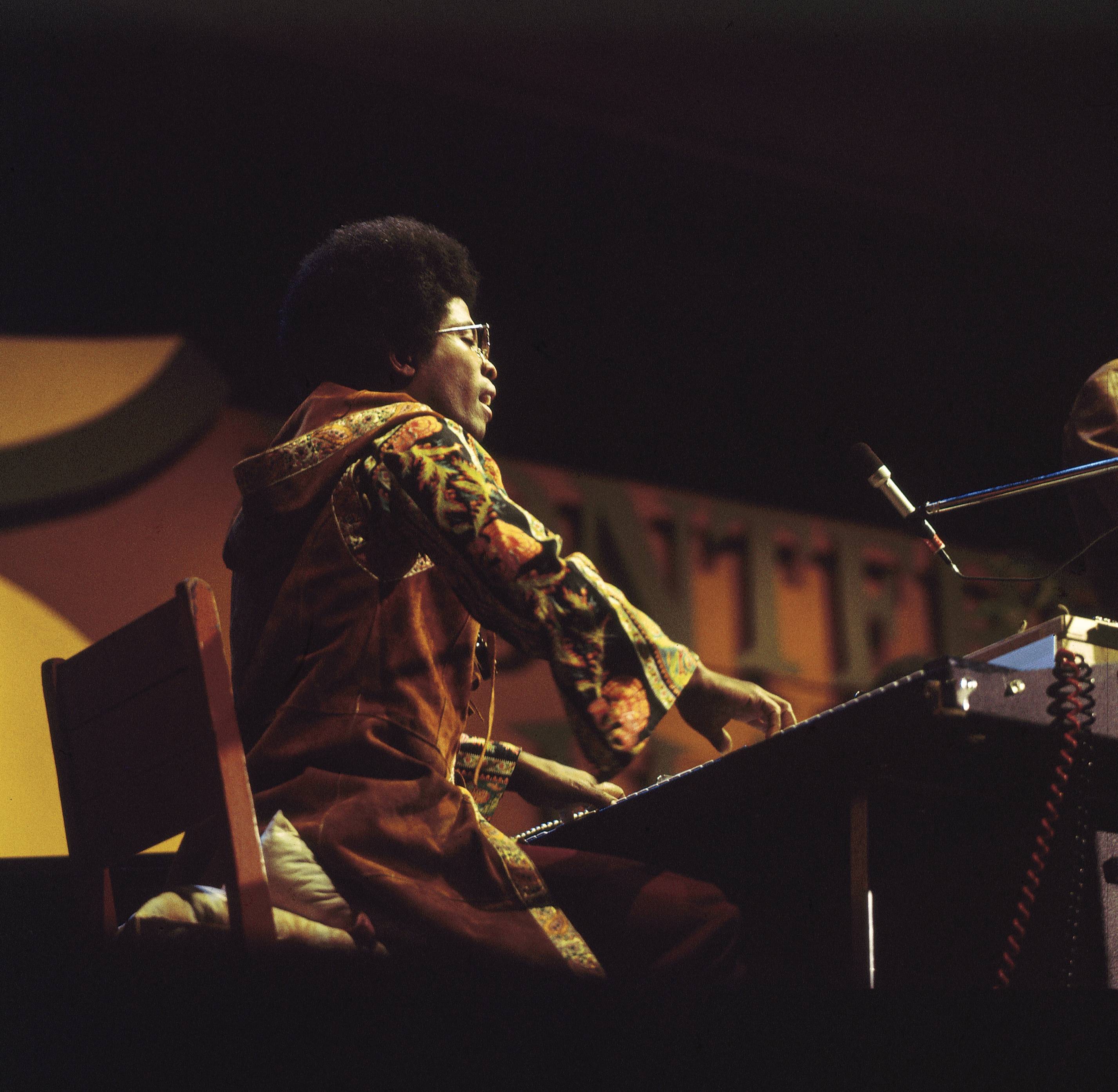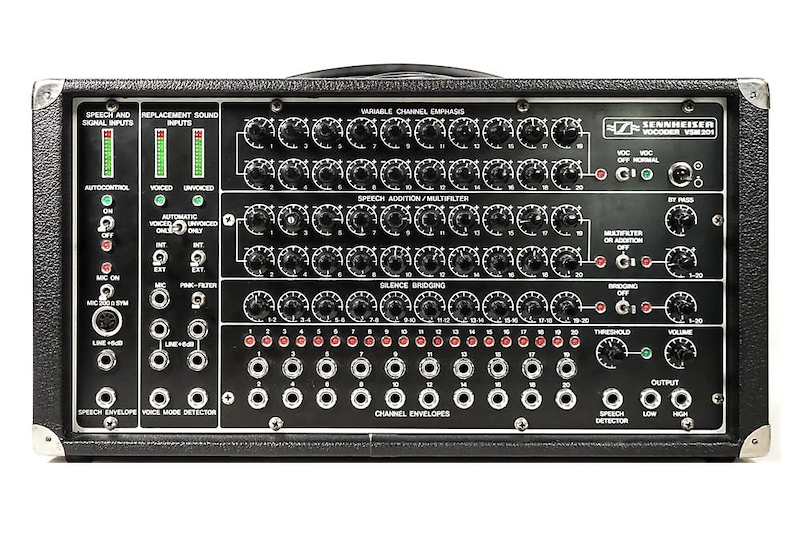There are few modern musicians more influential than Herbie Hancock. Known primarily as a jazz keyboardist, Hancock also dabbled in pop, R&B, funk, disco, hip-hop, and soundtracks. His use of synthesizers and other electronic gear was always forward-thinking, readily adapting new technology and folding it into his way of working. Through songs like "Chameleon," "Rockit" and "I Thought It Was You," to say that he helped popularize synthesizers in the late 20th century is an understatement.

What’s particularly shocking is that Hancock started as something of a piano purist. Formerly a classical music child prodigy, Hancock joined Miles Davis’ Second Great Quintet in 1963. He credits Miles as helping open his mind to the kinds of musical possibilities beyond the piano specifically and jazz more broadly as well.
"We were doing a recording session with Miles, and when I came into the studio I didn't see any acoustic piano anywhere," Hancock said in an interview with Sound On Sound magazine in 2002. "In the corner of the room was only this Wurlitzer electric piano that I'd never played before. I asked Miles what he wanted me to play, and he said 'Play that.' I was thinking 'That toy?' Then I turned it on and was really surprised by the sound. It sounded beautiful! From that I learned not to form an opinion on something you have no experience of."
This open-mindedness would go on to serve Hancock time and time again, both in working with electronic gear (synthesizers, drum machines, samplers) and in embracing new styles of music (funk, disco, hip-hop).
Hancock has never been secretive or precious about his gear, either, helpfully listing his instruments on most of his record jackets. We’ll use this as a road map to trace his career from the early 1970s to the early 1980s, and highlight how his use of gear informed not only his own sound but popular music in general.
Head Hunters (1973)
In the early 1970s there just weren’t that many synthesizers on the market. Consequently, most musicians were either on team Moog or team ARP. This was true of rock (Keith Emerson’s famous Moog Modular versus Edgar Winter’s ARP 2600), funk (James Brown and a Moog Minimoog and Kool And The Gang and The Commodores with ARP 2600s), and of course jazz (Chick Corea’s Minimoog and Joe Zawinul’s dual 2600s). This is a simplification but in general, artists tended to work with either one or the other. Hancock was on team ARP.
Head Hunters, released in 1973 and recorded with the band Headhunters, sees Herbie making deft use of an ARP Odyssey and Soloist for the synthesizer parts.
The ARP Odyssey was a monophonic synthesizer released in 1972. Intended as a competitor to the Minimoog, it has a rougher sound than Moog’s monosynth. And while the Minimoog is famous as a bass machine (and rightfully so), the ARP Odyssey is no slouch in the low-end department either, as the bass line in album opener "Chameleon" demonstrates. Yes, one of the most famous synth bass lines ever was done on an Odyssey. The Odyssey is also famous for leads, and you can hear Herbie putting his through its paces in the synth solo on "Chameleon."
The Soloist is less well-known than the Odyssey. First released in 1970 (and later replaced by the Pro Soloist), it was a preset-only monosynth designed to sit on top of an organ. It had 18 presets with the typical complement of faux-acoustic instrument sounds. It is, however, extremely funky (just ask the Ohio Players and their "Funky Worm").

While Hancock’s experimentations with synthesizers certainly began around the time of Head Hunters, the crossover popularity of "Chameleon" helped usher synths into a wider general acceptance.
Sextant (1973)
Where Head Hunters is funky and earthbound, Sextant, released the same year and recorded with his Mwandishi group, sounds like nothing short of a trip through the Stargate at the end of 2001: A Space Odyssey. Influenced by his time spent with Miles Davis—and sharing some of the same DNA as Miles’ landmark Bitches Brew—it’s profoundly psychedelic, with all manner of wild effects like the Fender Fuzz Wah, Countryman Phase Shifter, and Echoplex transforming traditional instruments into phantoms and monsters.
Another chief component to the album’s sound is ARP synthesizers, this time in the form of a 2600 and Pro Soloist. Both were played by Patrick Gleeson (with "assistance from Herbie," as the liner notes assert).
The 2600 was ARP’s 1971 follow-up to their gargantuan 2500 and the first semi-modular synthesizer. It was capable of bass and leads but also all manner of wild effects, as heard on "Raindance." It’s hard to believe that this record was filed under "jazz" in 1973.
The Pro Soloist replaced the Soloist in 1972 and upped the preset count to 30. It was also reportedly less prone to breaking down. And, although not credited, Sextant (and especially "Rain Dance") wouldn’t be what it is without the 16-step ARP Sequencer. Sequencers were pretty exotic even in rock and electronic music at the time. In jazz, it was unheard of. Check out "Nobu" on Hancock’s Dedication album for more mind-melting ARP Sequencer jazz.
We would be remiss to not mention Patrick Gleeson at this point. Gleeson—who first appeared on a Hancock record with Crossings, adding Moog Modular to the electric mix—was originally hired as a synthesizer tech but was later asked to stay on as a member of the band. He became something of a synth mentor for the band leader, teaching him technique, according to Hancock. This was part of the jazz great’s talent—he knew how to bring in the right people to expand his vision and creativity.
Hancock’s core gear list would remain relatively unchanged through the rest of the mid-‘70s. he did pick up a few choice instruments along the way, such as the Oberheim 8-Voice for Man-Child and a Moog Micromoog on Secrets, but the biggest change to his 1970s sound was yet to come.
Sunlight (1978)
By the late 1970s, the sound of jazz was changing. It was becoming smoother, with the far-out explorations of just a few years before replaced by more radio-friendly, R&B-style grooves. Hancock’s Sunlight album was in line with this larger trend and spawned the hit vocal track, "I Thought It Was You." But what made this track unique was more than just the presence of vocals—they were vocoder vocals.

Hancock’s late-‘70s/early ‘80s records were dominated by the sound of the vocoder—specifically, a Sennheiser VSM-201, the same model Kraftwerk used. Vocoders had been around for a few years but the late-1970s saw their use explode in popular music, with E.L.O., Giorgio Moroder, and the previously mentioned German quartet keeping the sound alive.
With its pinched, almost nasal sound, Hancock’s vocoder was particularly influential on later bands like Zapp, who would use a talk box to create a similar, funky effect.
While the usual monosynths were present and accounted for on Sunlight (Moog Minimoog and Micromoog, ARP Odyssey and 2600) the big addition to Hancock’s sound here was the polysynth. By the time of Sunlight, synthesizer technology had reached the point where it was possible to play more than one note at the same time. For a former classical pianist like Hancock, this must have been a godsend.
A glance at the epic photo on the back cover of the album reveals an Oberheim 8-Voice, ARP String Ensemble, Moog PolyMoog, and Sequential Circuits Prophet-5. And, while there is a Yamaha CS-50 there behind him, the lack of a flagship CS-80 is rather surprising, although Hancock would add one by the time of Lite Me Up in 1982.
Feets Don’t Fail Me Now (1979)
Like many other artists in the 1970s, Hancock was feeling the pull of the dance floor, and Feets Don’t Fail Me Now features plenty of DJ-ready vocoder disco jazz. While Hancock’s gear list for Feets was largely the same as Sunlight, one thing that was different was the presence of programmer Gordon Bahary, later of electro group Twilight 22 fame. We spoke with Bahary about his time working with Hancock.
Hancock got in touch with Bahary after his work on Stevie Wonder’s album, The Secret Life Of Plants, and worked with Hancock at Automat Studios in San Francisco. "I created synthesizer sounds so he could play most of the instruments," Bahary explained. "My focus on this album was more orchestral instruments."
"Herbie was one of the most adept musicians in terms of innovation," he continued, "so it was fantastic to bounce ideas off each other. He understood everything I was doing with filters, resonance, envelopes. Most of the other people there did not understand what we were doing at the time. Today it is more understood and common. So we were in our own world speaking our own language. It was great fun."
When asked what instruments he remembered at the sessions, Bahary confirmed the Oberheim 8-Voice and Sennheiser vocoder. He also brought one of his own: a custom-made, touch sensitive Odyssey built for him by ARP in 1975 upon his request. This can also be heard on "Electric Kingdom," Twilight 22’s 1983 hip-hop hit.
How was it working with Hancock? "He was a gentleman and very kind to everyone, as well as humble," remembered Bahary. "I’m still gaining more appreciation today for all that I learned. He was a consummate professional in all areas of the session, including the arrangements he wrote for individual musicians and orchestra, and was respectful to each musician."
Another example of Hancock knowing what he wanted and working with the right people to achieve his vision.
Future Shock (1983)
In 1983, Hancock hooked up with another co-conspirator, Bill Laswell of Material, to create the genre-busting "Rockit." Melding jazz with then-underground hip-hop, it was a high-watermark for ‘80s popular music and reinvigorated Hancock’s career in the process. The track was followed by the album Future Shock, which further expanded the definition of jazz with electronics, drum machines, and hip-hop and African rhythms.

In keeping with its modern style, the album used a number of then-cutting edge (and very expensive) instruments, like the Fairlight CMI sampler and Moog Memorymoog. While there aren’t any ARP instruments listed on the album credits, the unstoppable lead line on "Rockit" was played on a Rhodes Chroma. Developed by ARP, the polyphonic Chroma was the company’s final instrument before declaring bankruptcy and being bought by CBS/Rhodes.
Other unique pieces of gear used on the sessions included the Yamaha GS-1 (a pre-DX7 FM synth), a Garfield Electronics Doctor Click Rhythm Controller for ensuring all the gear could sync together, and an E-mu Systems 4060 Digital Keyboard. Released in 1976, this polyphonic keyboard controller could act as a trigger for modular systems, could sample, and had an onboard sampler.
Future Shock also featured a Syntauri alphaSyntauri, a digital synth housed inside an Apple IIe. Yes, it was an early soft synth—an additive one, to be exact, based around the Mountain Computer Music System sound card. There was also an external keyboard that connected to the computer via SCSI—very cutting edge for 1983.
